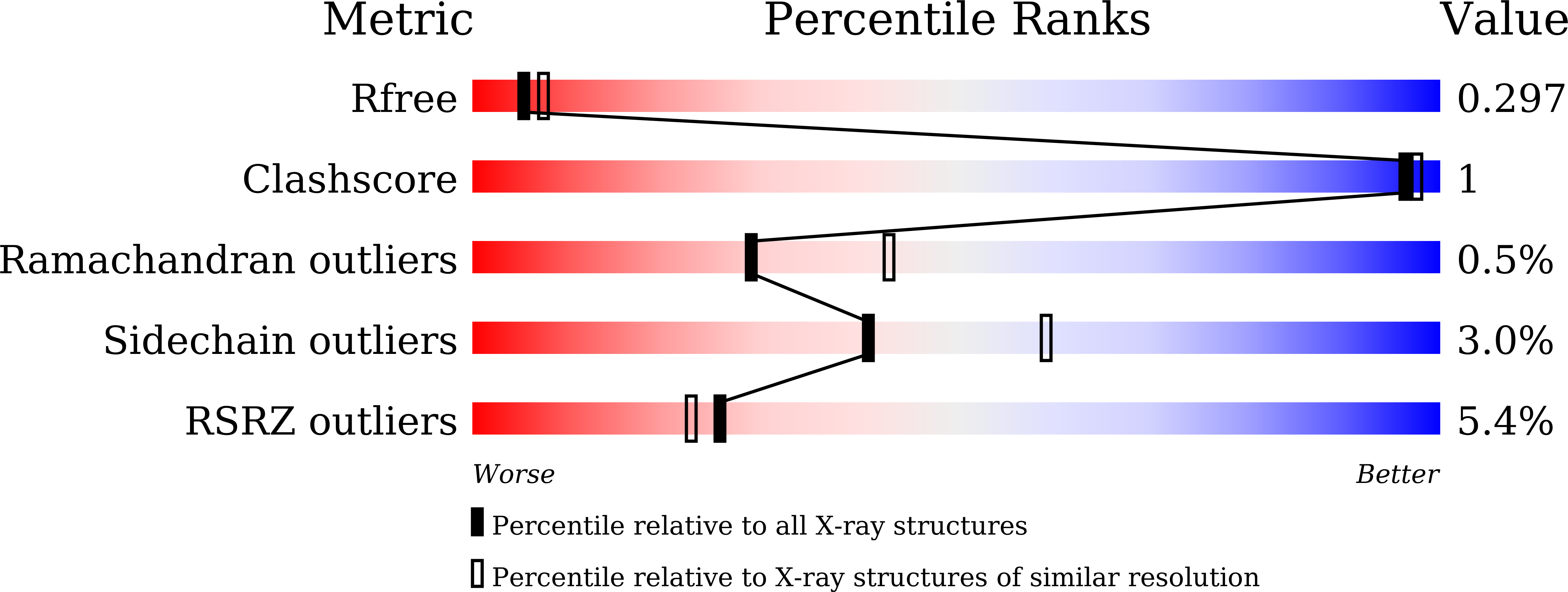Structure insight of GSDMD reveals the basis of GSDMD autoinhibition in cell pyroptosis.
Kuang, S., Zheng, J., Yang, H., Li, S., Duan, S., Shen, Y., Ji, C., Gan, J., Xu, X.W., Li, J.(2017) Proc Natl Acad Sci U S A 114: 10642-10647
- PubMed: 28928145
- DOI: https://doi.org/10.1073/pnas.1708194114
- Primary Citation of Related Structures:
5WQT - PubMed Abstract:
Recent findings have revealed that the protein gasdermin D (GSDMD) plays key roles in cell pyroptosis. GSDMD binds lipids and forms pore structures to induce pyroptosis upon microbial infection and associated danger signals. However, detailed structural information for GSDMD remains unknown. Here, we report the crystal structure of the C-terminal domain of human GSDMD (GSDMD-C) at 2.64-Å resolution. The first loop on GSDMD-C inserts into the N-terminal domain (GSDMD-N), which helps stabilize the conformation of the full-length GSDMD. Substitution of this region by a short linker sequence increased levels of cell death. Mutants F283A and F283R can increase protein heterogeneity in vitro and are capable of undergoing cell pyroptosis in 293T cells. The small-angle X-ray-scattering envelope of human GSDMD is consistent with the modeled GSDMD structure and mouse GSDMA3 structure, which suggests that GSDMD adopts an autoinhibited conformation in solution. The positive potential surface of GSDMD-N covered by GSDMD-C is exposed after being released from the autoinhibition state and can form high-order oligomers via a charge-charge interaction. Furthermore, by mapping different regions of GSDMD, we determined that one short segment is sufficient to kill bacteria in vitro and can efficiently inhibit cell growth in Escherichia coli and Mycobacterium Smegmatis These findings reveal that GSDMD-C acts as an auto-inhibition executor and GSDMD-N could form pore structures via a charge-charge interaction upon cleavage by caspases during cell pyroptosis.
Organizational Affiliation:
State Key Laboratory of Genetic Engineering, School of Life Sciences, Collaborative Innovation Center of Genetics and Development, Fudan University, Shanghai 200438, China.



















